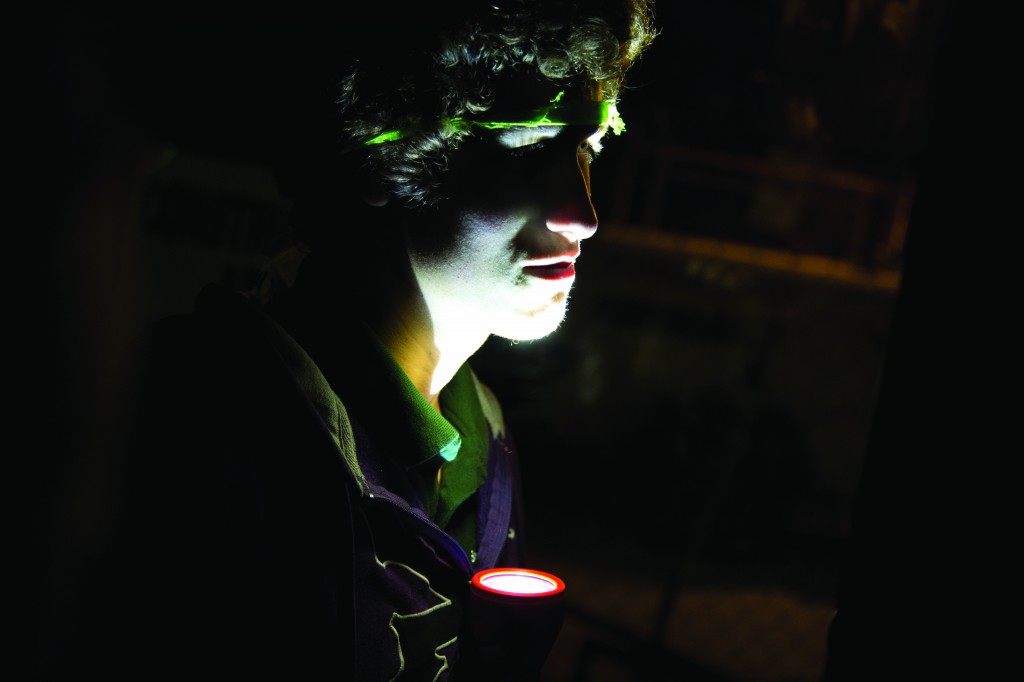
Zombies have come to Binghamton, and they’re not the blood-thirsty, brain-craving shambling horde we’ve come to expect. They’re smart, organized and they wear neon-green headbands. Every semester, the Zombie Student Association hosts a week-long game of “Humans vs. Zombies.” Essentially, it is a game of tag where the zombies are “it” and the humans defend themselves with socks, marshmallows and Nerf guns. The zombies’ goal is to convert the humans to the undead side. The humans need to survive the week and finish all the necessary missions in order to win. Humans are safe indoors, but outdoors they’re fair game. Running to classes, intense paranoia and action-heavy night missions are just normal activities. To help you survive your next encounter with the undead apocalypse at Binghamton, here are a few choice tips:
1) Avoid the Spine — This might seem obvious, but the Spine is a deathtrap. With that many students packed into such a tiny space, nothing good can happen. You could be snuck up on without even a sound. You could be ambushed from Lecture Hall, Glenn G. Bartle Library, Fine Arts Building or the University Union. There are trees for zombies to hide behind, low walls to duck under and sharp corners that are perfect for traps. Plus, zombies love to patrol the walkway, looking for humans who are low on time and desperate to get to class. Unless being ambushed and chased across campus by a mass of undead students sounds like fun, avoid the Spine.
2) Know the campus and its buildings — Building-hopping is essential during the day. Learning which buildings are close to each other is extremely helpful as it keeps your time outdoors (and in danger) limited. An experienced survivor knows that you can scale the Union, Fine Arts, Academic A, Student Wing and Lecture Hall with only a few meters of outdoor exposure if you move circularly. Also, be aware of the most populated paths on campus. If you have to be outdoors, it’s best to stay away from the more populated walkways. The more people there are, the more likely there will be a zombie in the crowd. In addition, know the entrances and exits in the buildings you’re going to be using. Keeping away from the main doors and using side entrances and exits are great ways to avoid crowds. Just be careful: some doors may be exits, but not entrances. It may make your commute a little longer but it beats having to sprint across campus with the horde on your heels.
3) Find the right play style for you — During the day, you’re going to be limited to throwing socks and marshmallows to stun your zombie foes, and moving as quickly as you can to avoid them. But after 7 p.m., you’ll be open to many more possibilities. A popular choice is to use Nerf blasters and stick to large groups. The blasters are cheap, fairly reliable and can pack a lot of ammo. Other players like to get a little more creative. A blowgun made out of some PVC pipe can shoot much farther than your average Nerf gun. Dressing head-to-toe in black and using stealth keep you from having to deal with too many zombies at once.
4) Find a group that will stay together – As the week goes by, more and more humans will be infected and become your undead foe. With fewer humans and more zombies, the night missions become increasingly difficult as the human count dies out. During particularly intense missions when casualties are high and ammo is low, someone or some group is inevitably going to panic and desert. The more humans that desert the group, the more likely it is for the whole group to be overtaken. That’s why it is vitally important to find a group of humans who you know have your back, even if you’re staring down the entirety of the zombie horde.
Surviving the zombie apocalypse isn’t easy. In fact, at Binghamton, no human has ever survived to win a week-long game. It’s tiring. It’s nerve-racking. It just might be the most fun you’ll have all semester. So good luck, and remember to watch your back.


